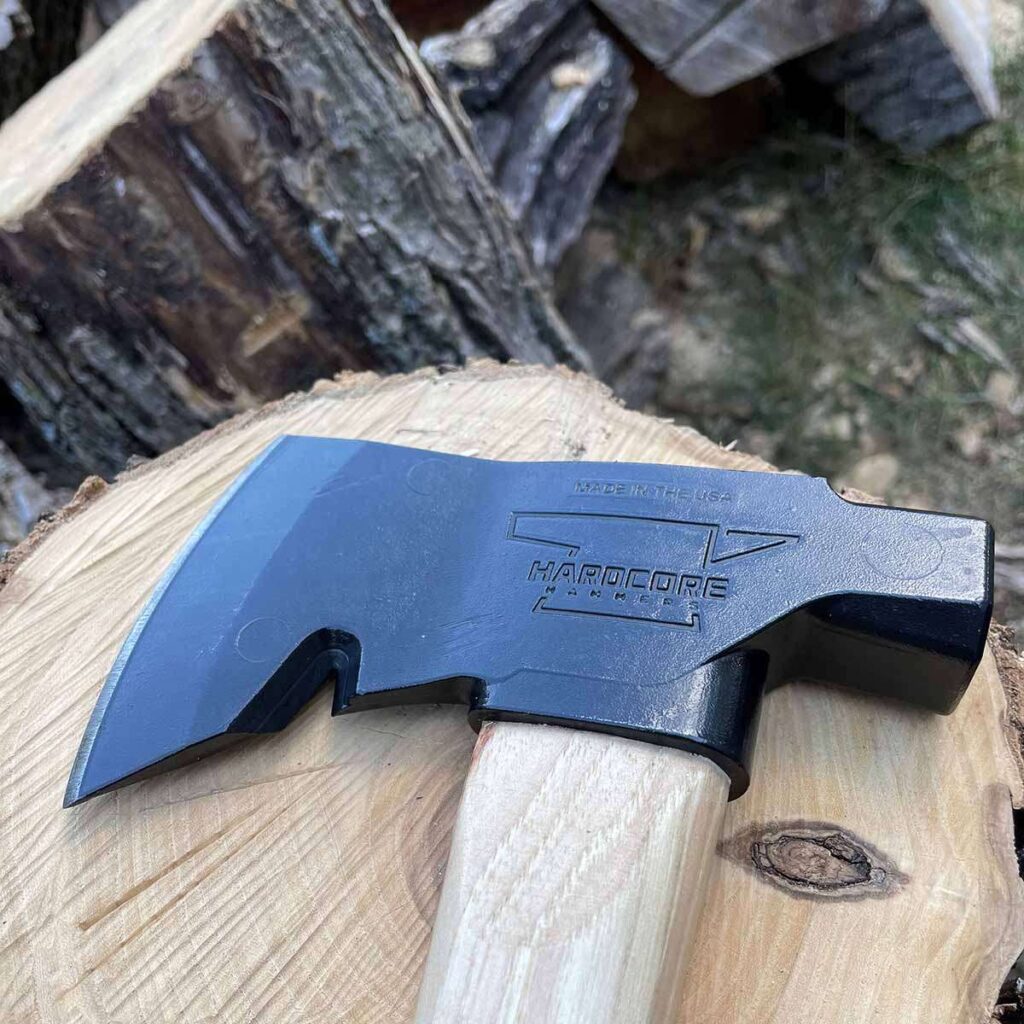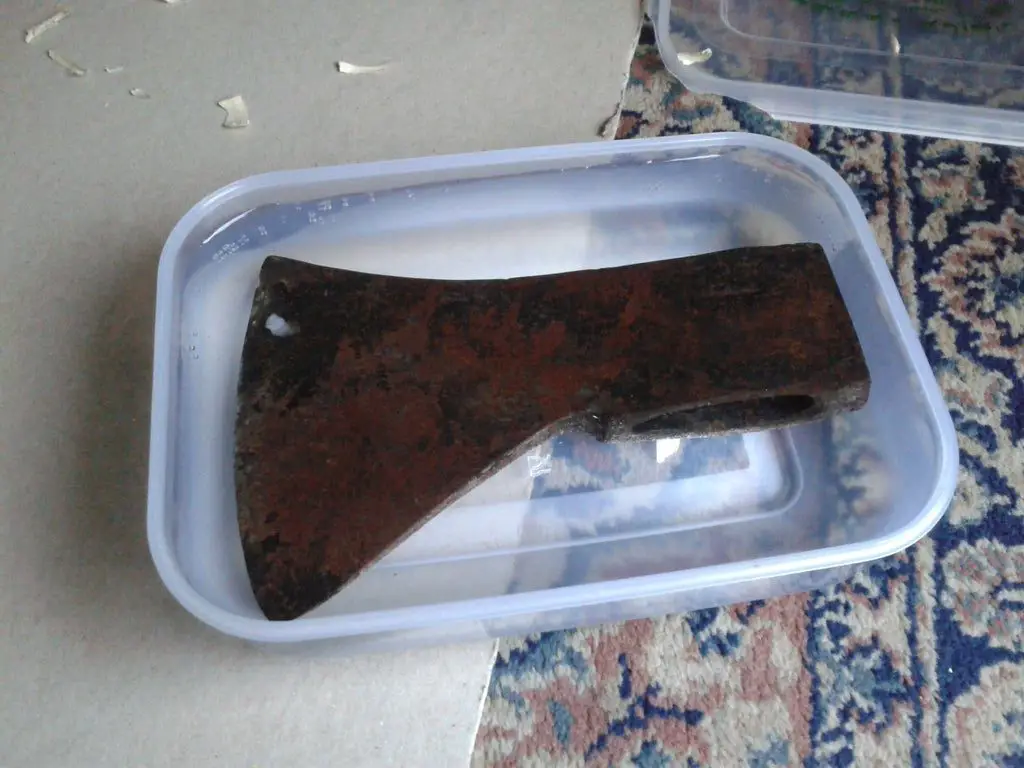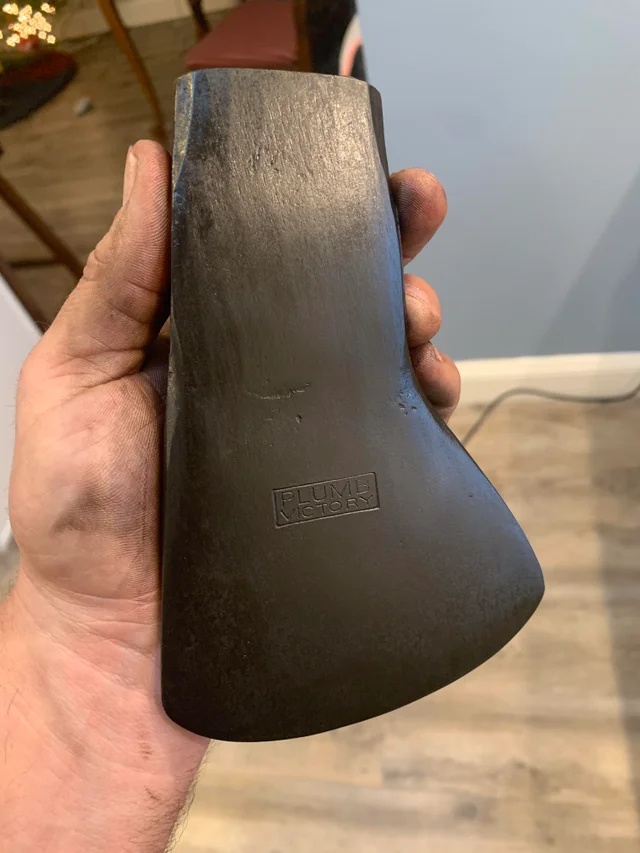Blackening an axe head involves four steps: removing rust using steel wool and vinegar, cleaning the surface thoroughly, applying gun bluing solution for the blackening effect, and finally, polishing the axe head with motor oil.
As someone who loves taking care of their tools, I’ve discovered that blackening an axe head gives it a unique aesthetic and adds a layer of rust protection. The process is straightforward, using common household items and a couple of easily available specialty products.

Table of Contents
Tools Required
Here’s a list of what you’ll need:
- Steel wool
- Vinegar
- Soap and water
- Gun bluing solution
- Rubber gloves
- Safety glasses
- Clean cloth
- Motor oil
Step 1: Remove Rust from the Axe Head
The blackening process begins with prepping the axe head, removing any rust or old paint. I learned from experience that doing a thorough job at this stage is critical to achieving a satisfying final result.
For this task, steel wool is your best friend. It will scrub off rust and any old finish without damaging the steel bit. If rust proves stubborn, don’t hesitate to soak the axe head in vinegar for about an hour. The acidic properties of the vinegar help dissolve rust, making it easier to scrub off. I was honestly amazed the first time I saw how effectively vinegar works!

Step 2: Clean the Surface
After scrubbing, you’ll need to clean the axe head thoroughly. Use dish soap and warm water to wash off the vinegar and any leftover rust particles. Remember to scrub in the little nooks and crannies as these can hide residues that might interfere with the blackening process.
Once it’s clean, dry the axe head thoroughly. Any water left behind can affect how well the gun bluing solution adheres to the steel.
Step 3: Gun Bluing The Axe Head
Now comes the transformative part – the actual blackening of the axe head. For this, we’ll use a gun bluing solution. It’s an effective and widely-used product for blackening steel.
Before starting, put on your rubber gloves and safety glasses. The bluing solution can cause skin irritation and eye damage, so always err on the side of safety.
Apply the bluing solution evenly over the axe head using a clean cloth or sponge. I’ve found that circular motions work best for a smooth and even finish. You’ll notice the steel darkening immediately. Add another layer if the color isn’t deep enough after the first application. It took me a couple of tries to figure out the right darkness level, so don’t worry if you don’t get it perfect on the first go.

Step 4: Polishing with Motor Oil
The last step is to seal the newly blackened axe head with motor oil. This provides a sleek, glossy finish and adds another barrier against rust.
Take a clean cloth, dab it in motor oil, and apply it across the entire axe head. I love how the axe head gleams after this step – it’s like the cherry on top of a successful project!
Why Would You Blacken an Axe Head
If you’re new to the idea of blackening an axe head, it might seem like an unnecessary task at first glance. However, the reasons for undertaking this task are far from superficial.
One of the primary reasons to blacken an axe head is to extend the life of your tool. The blackening process creates a thin, protective layer over the steel, significantly reducing the susceptibility of the axe head to rust and corrosion. If you’ve ever had a tool ruined by rust, you’ll understand the importance of this added protection.
From an aesthetic standpoint, a blackened axe has an undeniable allure. It exudes a rugged sophistication that makes it stand out. Over the years, I’ve found that a well-maintained, blackened axe head often becomes a conversation starter among friends and fellow outdoor enthusiasts. The uniquely darkened finish and the knowledge that it’s a DIY job certainly add a sense of pride to wielding your axe.
There’s a therapeutic aspect to the process. Working with your hands to restore and enhance a tool provides a sense of accomplishment and connection to your tools. There’s an almost meditative quality to methodically working through the stages of blackening an axe head – removing the rust, cleaning the surface, applying the bluing solution, and finally, polishing it with oil.
This process has become an enjoyable routine that I look forward to.
Safety Tips
Working safely should be a priority in any DIY project. The blackening process involves some chemicals that require appropriate safety measures. Always use safety glasses and rubber gloves to protect your eyes and skin from potential irritation.
Working in a well-ventilated area is also crucial. The gun bluing solution used for blackening steel emits fumes that can be harmful if inhaled in large amounts. If you’re working indoors, have windows open or fans running to ensure sufficient airflow.
Also, keep your workspace clean and organized. Clutter can cause accidents, so ensure your tools and materials are well-arranged and easily accessible.
Remember to store the gun bluing solution and motor oil out of reach of children and pets after use. These chemicals can be harmful if ingested or come into contact with the skin.
Conclusion
In my years of working with tools, I’ve found that the care and maintenance you put into them significantly extends their lifespan. Blackening an axe head is one such maintenance practice. Not only does it provide a protective layer against rust, but it also revitalizes the aesthetic appeal of the axe.
This might seem minor, but you’ll appreciate the difference it makes once you’ve done it. Not to mention, there’s something satisfying about wielding an axe that looks and feels good in your hands. So try it, and remember to take safety precautions while doing so.
You might fall in love with the process, as I did.
